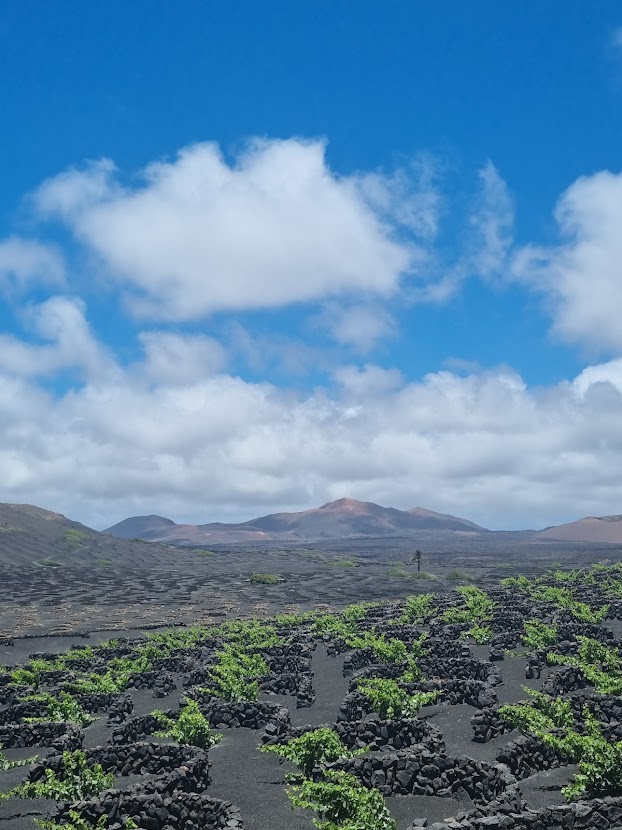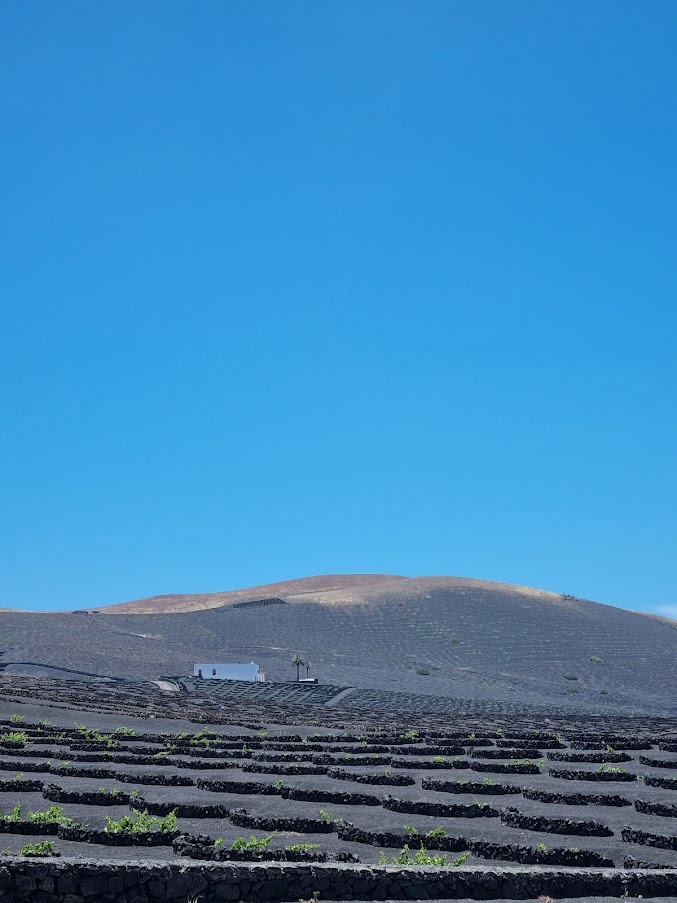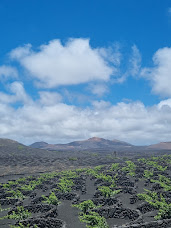People who know Jimmy and I know that we have a special affinity to the island of Lanzarote and have made it a training and holiday destination for many years.
This year, due to rolled over trips from 2020, we got the opportunity to visit twice, and it was interesting to see how the landscape had changed from January to May.
Lanzarote is a volcanic island with much of the terrain being dramatic solid lava and black ash. It is also very dry, with only an estimated 150 litres of rain fall per year. But out of this seemingly barren, dry landscape the colonists learnt to create one of the islands greatest products.
There is an area called La Geria and it has become the islands main region for wine production. In January when we are normally visiting, the fields look hostile and dark and you cannot imagine how anything could grow yet alone flourish. Yet, when we returned this year in May, the black ash fields were strewn with vibrant green vines!
In the 1700’s Lanzarote’s volcanoes were constantly erupting creating the lava fields and covering around 30% of the islands fertile soil with volcanic ash.
Life became very hard for the inhabitants, but the farmers learnt that the ash retained moisture and locked it into the soil beneath. They dug beneath the ash to plant vines, often 2 meters under the surface. They then discovered that by building semi-circular walls around the vines they could protect the crop from the constant trade winds (many cyclists will have experienced these!) and prevent them becoming covered in volcanic ash.
From these beginnings the vines have been cultivated into the distinct wines the island produces. Lanzarote wine is unique and has become a major source of income to the growers. Every time I cycle through La Geria I am moved by the stark beauty but am also reminded of an incredible story of overcoming seemingly impossible circumstances with perseverance and determination. This story shows me, that with those, great results can be achieved.




